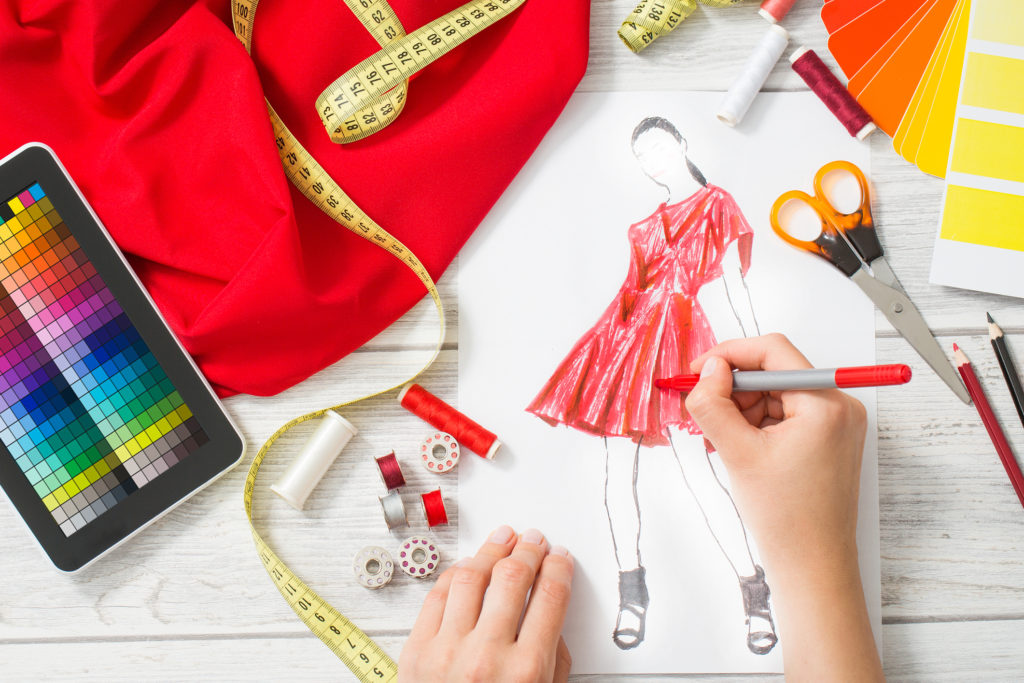
Read on to understand the interconnection between fashion and intellectual property and the benefits of protecting the related IP rights.
What does it take to be a successful fashion designer (from a legal perspective) in the highly competitive fashion industry? In the modern world, being a successful designer takes more than merely creating a quality product. Nowadays, it is also about fashion entrepreneurship, building brand identity and the ability to generate profit.
From a legal perspective successful fashion entrepreneurs know exactly what their Intellectual Property (IP) rights are and take steps to ensure they are fully protected. Fashion designers remember that their IP rights have a material value. Therefore, if managed appropriately it can help to maximise income for the business.
Fashion and Brand name
Brand name protection is of a crucial importance in every industry, especially in the fashion industry, as consumers often tend to buy fashion items based on a brand name. Brand names in the fashion world tell you more than the quality of the goods you buy, namely the history of the brand, designers behind the brand or concept of the brand, in other words the identity of the brand.
In order to avoid weakening the brand identity, fashion entrepreneurs take every step to protect the brand name or logo in countries they operate in and maintain the brand portfolio on a regular basis. By protecting the brand name, fashion entrepreneurs safeguard what rightfully belongs to them from infringers and maximise profits from the ownership of valuable assets. They are also protecting the hard work and investment they have made in developing a reputation.
Brand names can be protected by registering the mark on a national level such as in the UK or EU or on International level depending on where the entrepreneur is trading or plans to trade. It is recommended to register the brand name or logo when starting trading or even before.
Once registered fashion entrepreneurs will have IP rights in the mark. They can then place the symbol ® next to the trade mark which represents that the mark is registered.
A brand not only can be a brand name but also can be a logo, distinctive print, name of style or colours.
Fashion and Registered/Unregistered design
In the fashion industry it is quite common that protection of a fashion item falls under unregistered or registered designed rights.
A design of the fashion item can be automatically protected in the EU under unregistered design rights for 3 years if the design meets certain criteria. However, based on the business case and the design it might be more beneficial to register such a design.
For a design to be registered the item must be “new” and have “individual character”. The design can be protected for a maximum of 25 years.
If you register the design you can enjoy a longer protection compared to the unregistered designs. It is also helpful to have a design registration when your design is contested or infringed and you need to provide evidence to support your case. If your design rights are infringed you will need to show the date of the design rights, the ownership of the contested rights and the act of copying.
You can protect various things under design amongst those shapes of your fashion item, drawings and original stitch on the clothing.
Fashion and Copyright
The general rule is that copyright arises automatically and protects “original literary, dramatic, musical or artistic work”. For fashion industry it would be necessary to prove that the fashion item is original and is an “artistic work” with a degree of “artistic craftsmanship” to attract a copyright protection.
Copyright is the cheapest way of protecting your IP as it does not need to be registered, however if your ownership is contested, it might be challenging to demonstrate the ownership without a document trail. It is therefore very important to audit your copyright work and to control how it is shared.
Copyright owners are advised to place the universal symbol for the copyright © next to their name and the year to show they own the copyright.
Fashion and Patent
In the fashion industry patents are used relatively rarely as it is a more costly and time-consuming type of protection which operates slowly, often too slowly for the fashion industry. However, if you have created a high-performance material such as a waterproof material or a process to increase performance you may consider patenting your invention.
Conclusion
There are several benefits and more than one reason to protect the IP rights. By protecting IP rights, fashion entrepreneurs can:
- Obtain exclusivity;
- Generate profit from owning IP for example, by selling or licensing the IP rights;
- Stop others from infringing their IP rights;
- Safeguard the goodwill and reputation;
- Create value in their business.
If you want to ensure adequate and effective protection of your intangible assets you should seek a legal advice. Our IP/IT team is one of the top trade mark filers in the UK and the EU and specializes in various fields of IP.
*Please note this article is based on the IP protection in the UK, however if you seek to obtain the IP protection in other territories, we are able to advise you on this as well.
**The content of the article may change after the Brexit.
If you require any advice on fashion and intellectual property matters, please do not hesitate to get in touch by telephone 01392 210700 or email trademarks@stephens-scown.co.uk
